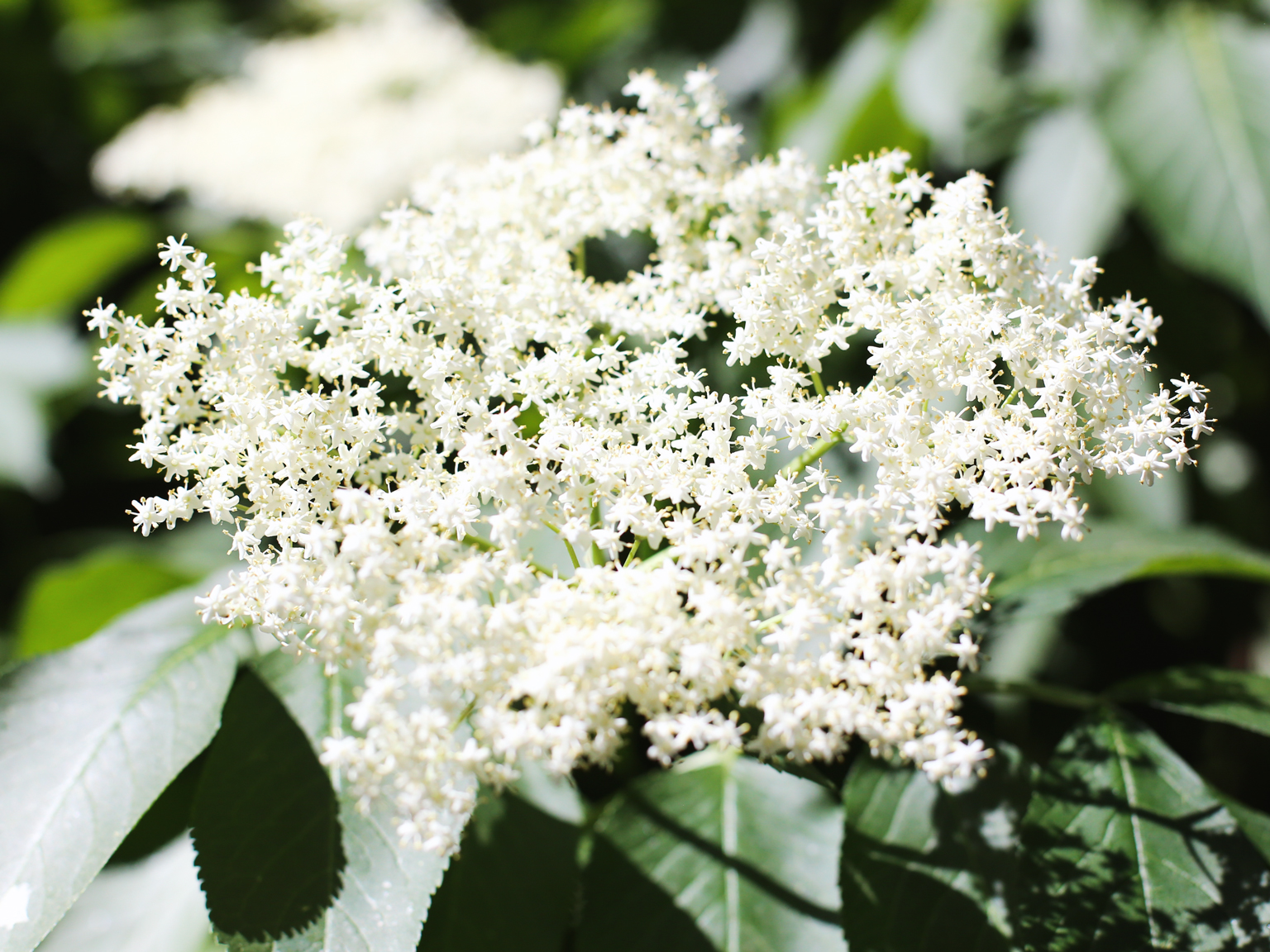Elderberry is a dark purple berry that grows on black elder trees in different parts of the world: from North America to Northern Africa. But not only the fruits are important. In the past, the roots were ground into an ointment for rubbing into aching parts of the body, today the flowers of the plant are quite a popular ingredient among distillers and bartenders. We know Swedish spirit akvavit, French St.-Germain – a liqueur that despite its name was created in 2007 New York.
Nondrinkers can enjoy the subtle flavour of the plant too. We can have a soft drink called elderflower cordial that is made by steeping little beautiful white flowers of the elder in a concentrated sugar solution with a splash of lemon juice. That added tartness is for balance. The syrup is left to infuse, strained, and then it can be mixed with sparkling or still water, tonic, soda. Nowadays you can also buy commercially available elderflower fizzy drinks but their flavouring is no match to the creamy and floral aroma of the real flowers. So it’s really worth making your own. It can be a good investment into your future dishes.
Easy but time-consuming
You can freeze the cordial, as you would do with the chicken stock, and then take it when it’s needed to add flavour to virtually any liquid. Think teas, champagne (why not!), ice cream base, sauces. Or make zabaione or sabayon, it’s an Italian dessert that has a sauce-like consistency and can be drunk or poured over the morning toast. The recipe is quite easy (though it can be intimidating because it is time-consuming).
Generally, you’ll need 4 egg yolks, 25 ml / 2 Tbsp of elderflower cordial, and 30 g / 2 Tbsp of sugar put together into a stainless steel bowl set into an appropriate-sized pan with some water inside (this whole construction is called bain-marie or water bath). You will need this double boiler to gently heat the egg mixture avoiding its rapid coagulation. Start whisking the eggs until they expand in volume fourfold. This might take 12-15 minutes but after you go through this ordeal, you will be rewarded with the most delicate and fine sabayon you’d ever had. Try it with French toasts, oat porridge or sliced fruits.
Fermentation
Another great and easy thing you can do is a honey ferment. All you need to do is to simply combine 1 cup of fresh black or blue elderberries with 1 cup of honey in a jar of an appropriate size, close the lid and invert the jar for 20 minutes (to make sure that the berries are well coated in honey). Then turn the jar back in its upright position, add more honey to cover elderberries if needed, loosen the lid to allow for air escape, and put the jar away from the direct sun into a shady place for 3 days.
Within 72 hours you’ll notice bubbling, don’t worry, it’s what we’re looking for in fermentation (it can take more time if it’s colder). The honey will become runnier, give it a stir and continue fermenting. In two weeks you’ll see a lot of bubbles. The elderberries are ready to be consumed but they can stay like this for weeks. Honey, being a syrup, is an aggressive environment for microorganisms that’s why it’s safe for consumption. Store in a fridge for up to 6 months, enjoy with tea and a common toast or add to your morning granola.











What do you think?